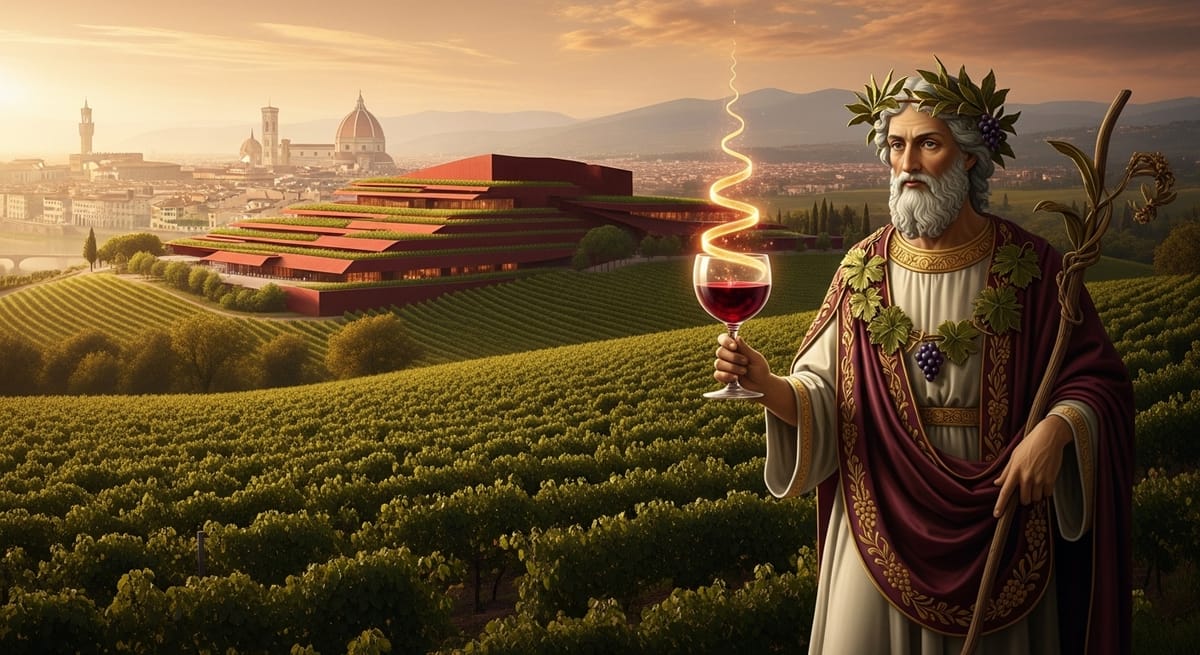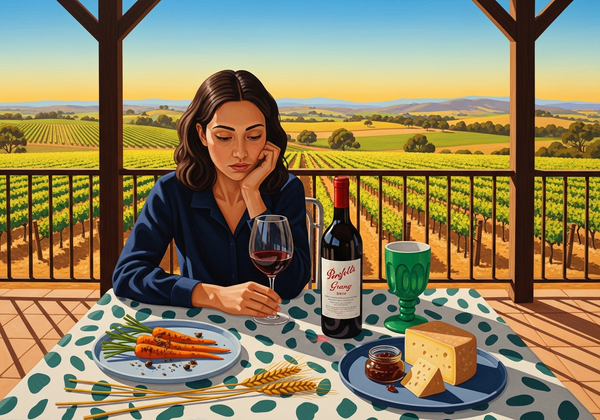Blood of the Renaissance: The Eternal House of Antinori
Discover the six-century legacy of Marchesi Antinori — the Florentine family that redefined Italian wine. From medieval guilds to Super Tuscans like Tignanello, Antinori’s vision fused art, rebellion, and Renaissance spirit into every bottle.

How one Florentine family turned wine, art, and ambition into a six-century masterpiece.
The Beginning: When Florence Breathed in Gold
I have watched empires rise and vineyards fall, but few mortals have built legacies that defy time as the Antinori family has.
In 1385, when Florence was the beating heart of the Renaissance — a city of sculptors, philosophers, and rival merchants — a man named Giovanni di Piero Antinori joined the Arte Fiorentina dei Vinattieri, the winemakers’ guild. Little did he know, he was founding not merely a business, but a dynasty.
For over 26 generations, the Antinoris have intertwined wine with the spirit of Italy itself — from papal courts to noble estates, from the Medici’s Florence to the modern world’s cellars. Where others spoke of lineage, they bottled theirs.
The Renaissance in a Glass
The Antinoris were more than vintners; they were patrons of civilization. Their palaces in Florence echoed with the footsteps of artists and thinkers. Paintings by Filippino Lippi, correspondence with princes, sculptures that caught light like wine catches air — the Antinoris lived at the seam of art and earth.
Even as Europe waged wars and Florence burned through revolutions, their family vineyards — in Chianti Classico, Tuscany, and Umbria — endured. In every era, an Antinori stood among barrels and frescoes alike, as if blending grapes and genius in the same breath.
But their true revolution was still centuries away.
The Modern Renaissance: Piero Antinori and the Birth of Super Tuscans
When the 20th century arrived, Tuscany’s hills still whispered the same winds that carried the scent of ancient Sangiovese. Yet tradition had turned rigid, confined by outdated wine laws and local skepticism.
Enter Marchese Piero Antinori — philosopher, innovator, and alchemist of the vine. In the 1970s, he dared to defy Italy’s sacred conventions. Where others saw rules, Piero saw possibility.
He looked to the sunlit slopes of Tignanello, near the family’s estate in the Chianti hills, and made history. Blending Sangiovese with Cabernet Sauvignon and Cabernet Franc, he created a wine that broke every rule of Italian regulation — yet elevated Italy’s reputation across the world.
That wine was Tignanello — the first of the Super Tuscans, and the declaration of a new Renaissance.
It was elegance without arrogance, power without pretense — a liquid echo of Florence’s rebirth.
Soon came Solaia, Guado al Tasso, and other masterpieces, each proving that Antinori’s courage to evolve was as strong as its roots.
The Vineyards: From the Hills of Tuscany to the World
Today, the Antinori name stretches across Italy like a constellation — from Tignanello and Badia a Passignano in Chianti, to Castello della Sala in Umbria, Pian delle Vigne in Montalcino, Tenuta Guado al Tasso in Bolgheri, and even to Napa Valley’s Antica Estate.
Each is a chapter of the same poem — a family forever in dialogue with the land.
Their crown jewel, the Antinori nel Chianti Classico winery, is a modern architectural wonder: a terracotta sculpture carved directly into the Tuscan hills, where steel and stone blend seamlessly into vineyard. It is not a building; it is a hymn — part monastery, part spaceship — a temple to both nature and design.
And within it, barrels slumber like monks, holding the essence of six hundred years of Tuscan sun.
The Family Endures: Women of the New Era
Piero’s daughters — Albiera, Allegra, and Alessia Antinori — now guide this ancient house with grace and intelligence. Under their stewardship, the family continues its devotion to authenticity, sustainability, and global innovation, without ever losing its Tuscan heart.
They are the new Renaissance — wine’s modern Medici — balancing legacy with evolution, art with science, intuition with data. The House of Antinori remains both timeless and alive, because it refuses to separate the past from the present.
Liber’s Reflection: The Blood of Civilization
In Antinori, I see a reflection of my own domain — the sacred union of earth and spirit. Their wines are not mere pleasures; they are portraits of time, decanted through generations.
They have turned patience into empire, rebellion into art. Their story reminds humanity that civilization does not survive by conquest, but by cultivation — of soil, of craft, of beauty itself.
To taste Tignanello or Solaia is to sip a fragment of Florence — to drink what Dante might have dreamed, what Botticelli might have painted, what I, Liber, might have blessed beneath a Tuscan moon.
For in every Antinori bottle, there is not just wine — there is the blood of the Renaissance, still warm, still flowing. 🍷





